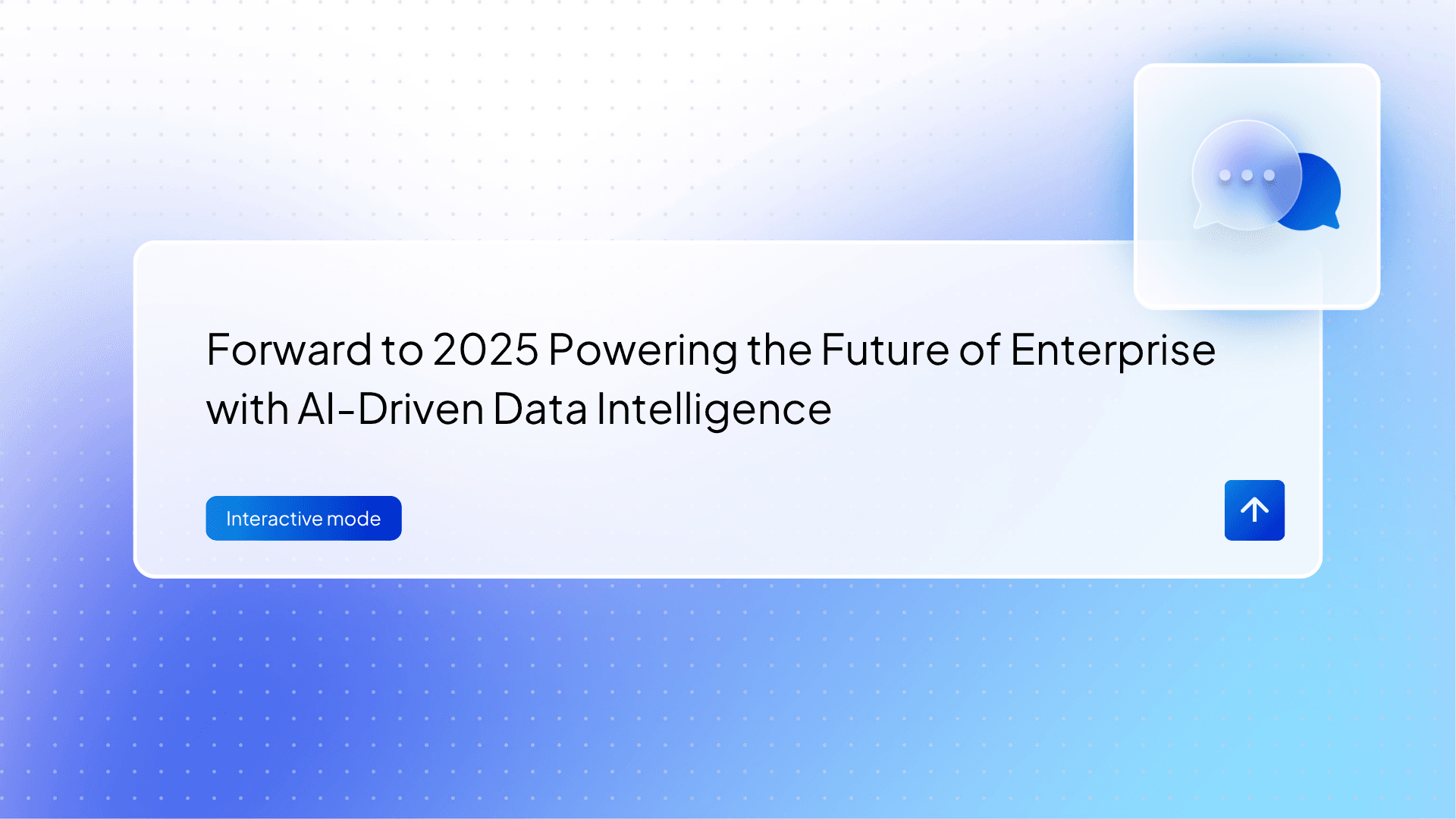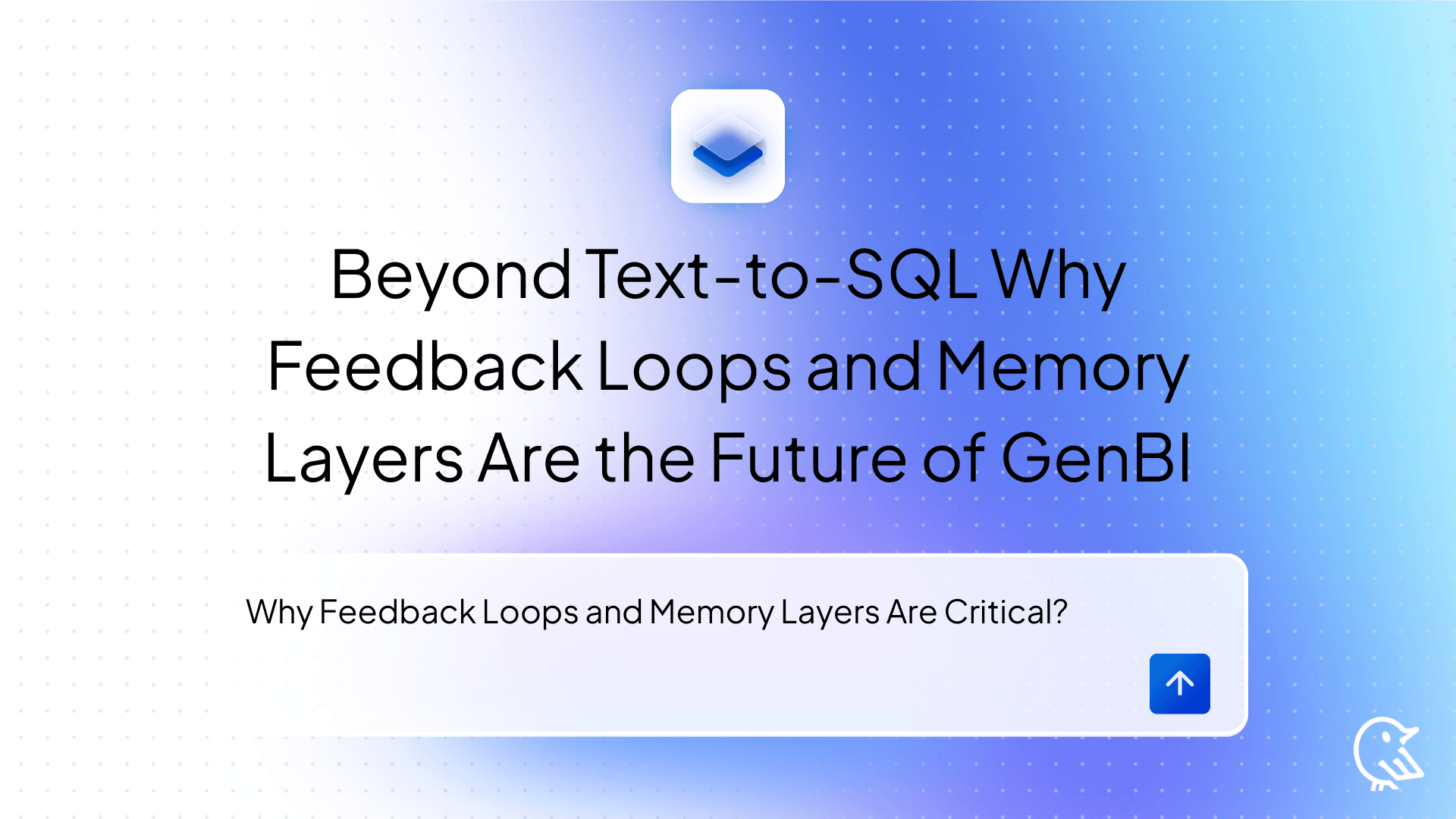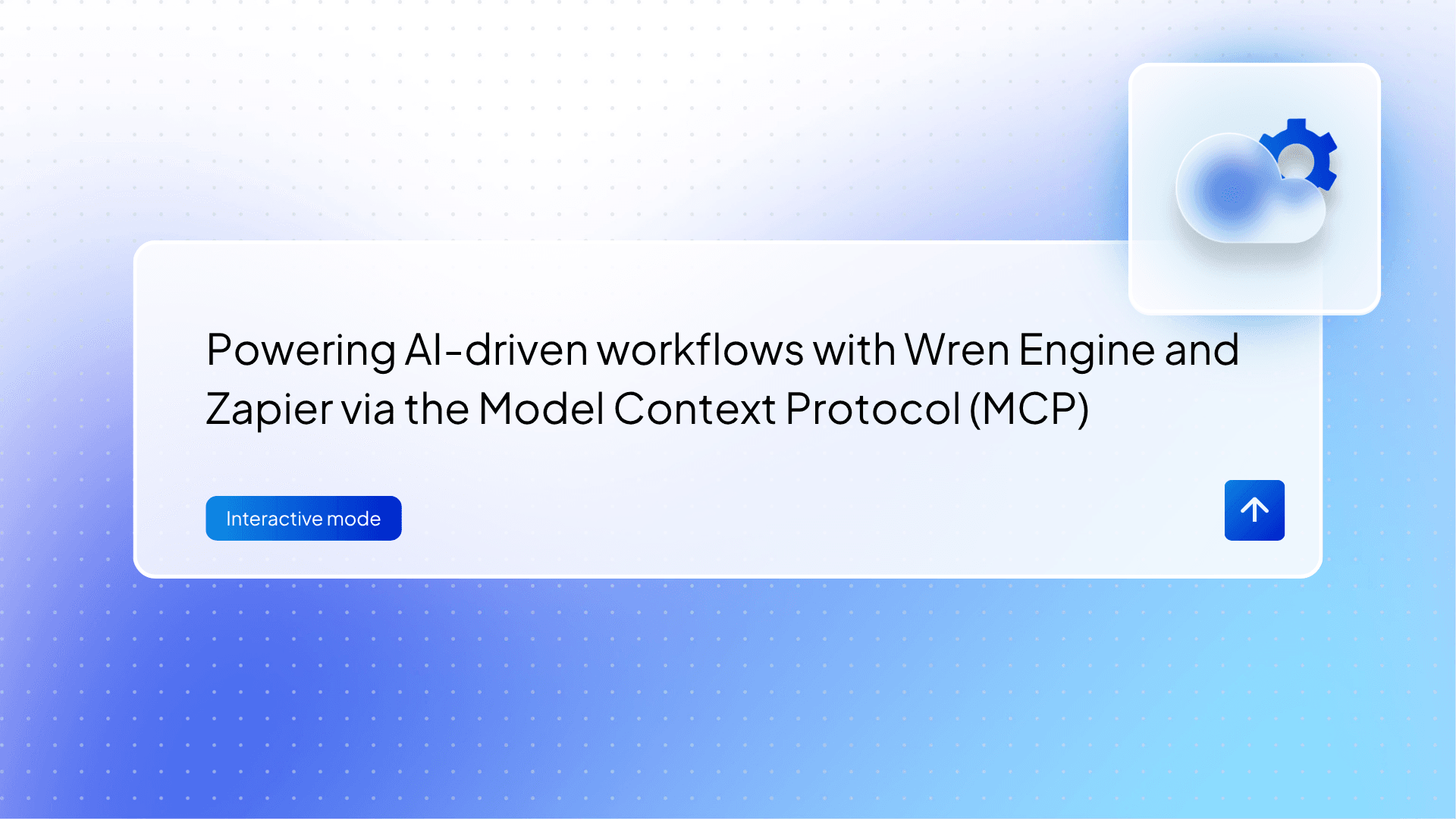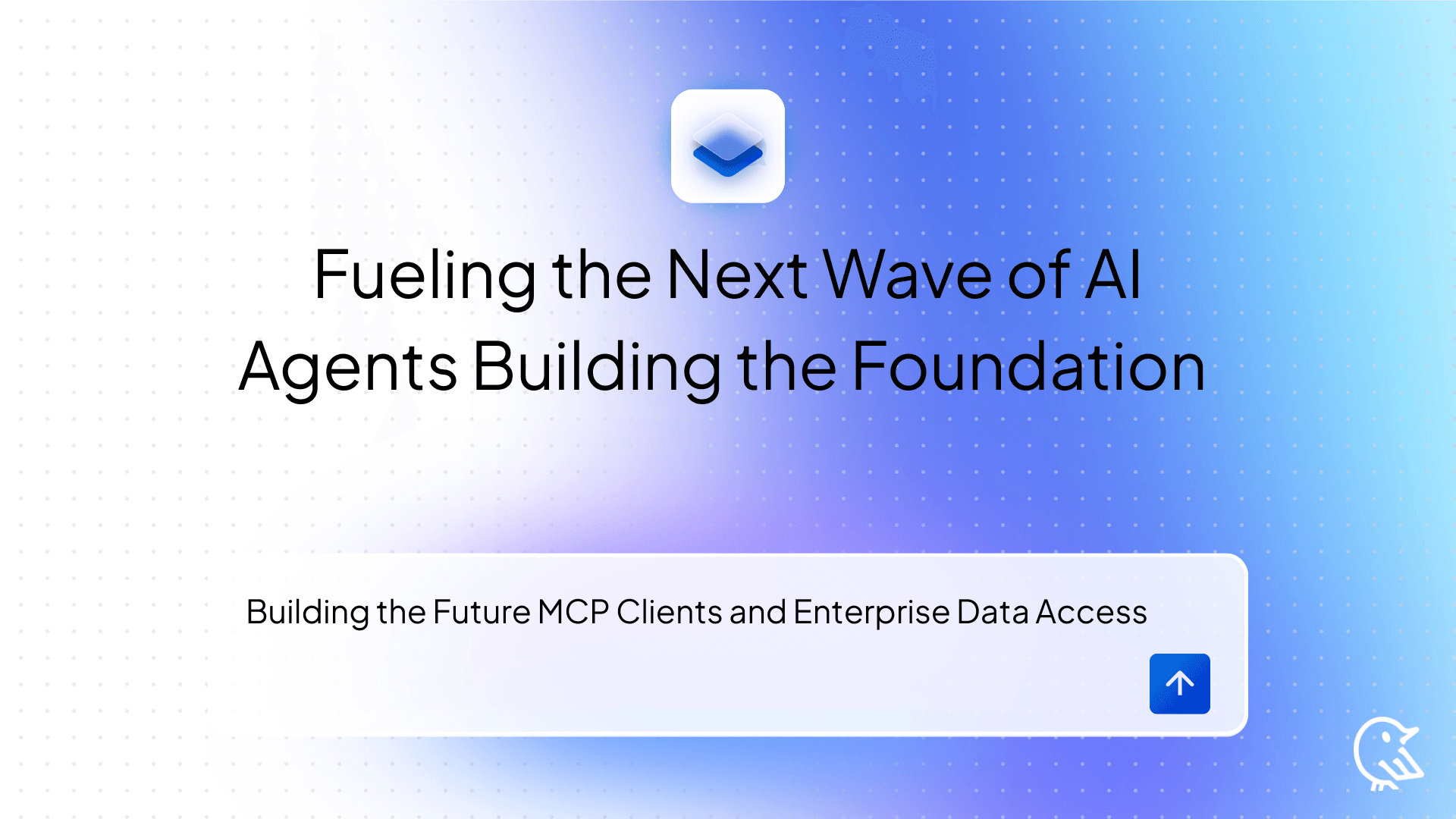Forward to 2025 Powering the Future of Enterprise with AI-Driven Data Intelligence
A Year of Wren AI Growth and Vision for the Future

Howard Chi
Updated: Oct 11, 2025
Published: Jan 17, 2025

As we welcome 2025, we reflect on the remarkable progress Wren AI achieved in 2024. This past year was a period of transformative growth driven by invaluable lessons, relentless innovation, and the unwavering support of our partners, customers, and contributors. We set ambitious goals to redefine how enterprises approach data intelligence, and our journey so far has only strengthened our belief in the immense potential of our mission.
Transforming Enterprise Data Chaos into AI-Driven Intelligence
In today’s fast-paced enterprise technology landscape, a torrent of data flows continuously from digital touchpoints, SaaS applications, and internal operational systems. This tidal wave of data offers immense potential for actionable insights while posing significant organizational challenges. Disconnected SaaS applications, fragmented data in warehouses, and rigid business rules contribute to complexity and inefficiency.
Wren AI’s mission addresses these challenges by unifying enterprise data through a comprehensive semantic framework that transforms silos into context-rich insights, enabling text-to-SQL self-service analytics and laying the foundation for future AI-driven data processes. Below, we explore the pain points in modern enterprise analytics, the key pillars of semantic data intelligence, and how Wren AI’s composable architecture — enhanced by Large Language Models (LLMs) — can fuel an AI-first data strategy ecosystem.
The Tectonic Shift in Enterprise SaaS
Over the past two decades, enterprise analytics has evolved from static spreadsheets to advanced BI dashboards and machine learning solutions. Yet, many SaaS products, such as CRM, ERP, and project management systems, have grown unwieldy and are trapped by their rigidity. They risk becoming mere CRUD platforms if they do not embrace the next wave of AI-driven semantic data agents capable of unifying disparate data, automating decisions, and orchestrating workflows.
The enterprise analytics of tomorrow must provide real-time, context-aware insights at scale. Wren AI’s vision empowers businesses to seamlessly integrate data from various systems, enhance it with semantic understanding, and unlock real-time, AI-driven outcomes.
The Current Challenges in Enterprise Analytics
Despite significant investments, organizations continue to face challenges with:
- Fragmented Data Sources: CRM data may reside in Salesforce, marketing analytics in Google Analytics, and operational details in SAP. With each system operating in isolation, teams lack a comprehensive enterprise-wide perspective.
- Rigid Business Rules: Hardcoded logic within analytics pipelines often fails to adjust to new data or shifting market conditions.
- Limited Contextual Insights: When metrics stand alone, they lose their relational context — like how a marketing interaction relates to future product usage.
- Siloed Analytics Teams: Analysts often spend more time cleaning and reconciling data than generating proactive insights
Pillars of Semantic Data Intelligence
Wren AI is designed around four core pillars:
- Contextual Data Modeling: Rather than viewing data points as separate metrics, knowledge graphs, and ontologies illustrate the relationships between customers, products, and transactions. A semantic approach clarifies how “sales call,” “marketing touch,” and “email open” are interconnected, allowing for nuanced analysis and consistent definitions across departments.
- Multi-Touchpoint Attribution: Simple first- or last-touch models seldom capture the reality of multi-channel, multi-step customer journeys. Wren AI’s semantic intelligence documents each interaction (marketing channel, sales call, or service event) in a knowledge graph, enabling Real-time attribution to comprehend each channel’s impact on conversion or upsell, Hyper-personalized offers derived from behavioral data, Adapting attribution logic as market conditions evolve.
- Unified Semantic Data Knowledge Management: Enterprises often manage multiple warehouses (e.g., Snowflake, Databricks) and various SaaS applications (Salesforce, Microsoft Dynamics, HubSpot, Stripe, etc.). Wren AI streamlines navigation through these complex schemas by applying semantic metadata on top of disparate sources. Insights generated (e.g., high-likelihood churn alerts) can automatically feed back into operational systems — a process known as reverse ETL — creating closed-loop data activation.
- AI-Augmented Operational Insights: AI-driven semantic agents act as the “brain” of enterprise operations, monitoring real-time data streams, recommending immediate actions, and orchestrating workflows. With a unified semantic model as a foundation, these AI agents can interpret and automate decisions that once required manual oversight. Wren AI’s architecture is built to support these capabilities through advanced LLMs and agentic pipelines.
Use Cases: Where Semantic Data Intelligence Shines
Customer 360 and Hyper-Personalization
Delivering a unified view of the customer is notoriously challenging. Wren AI brings data together from CRM, ERP, marketing, and support platforms, offering a 360-degree customer perspective. Businesses can then deliver targeted promotions, personalized support, and context-aware upselling across the entire lifecycle.
Marketing Optimization with Multi-Touch Attribution
Modern marketing spans email, social media, search ads, webinars, and more. Without robust multi-touch attribution, it is difficult to identify which channel contributes most to conversions. Wren AI’s intelligence tracks each customer touchpoint and lets teams pose natural language queries like, “Compare average CAC between direct email campaigns and social ads over the last 12 months.” This self-service approach reduces reliance on specialized data analysts.
Operational Efficiency in Supply Chain and Logistics
For global organizations, minor supply chain hiccups can have major repercussions. Wren AI models relationships among suppliers, shipping, and sales orders, predicting downstream effects of disruptions and triggering real-time mitigation strategies.
Introducing Wren AI: Vision, Architecture, and Text-to-SQL
Recognizing these industry-wide challenges, Wren AI provides a composable data architecture that meshes with existing data sources and platforms. Wren AI promises practical and transformational AI-driven analytics by overlaying a semantic model across enterprise data and coupling it with text-to-SQL via LLM interfaces.
Wren AI’s Modeling Definition Language (MDL)
MDL lies at the heart of Wren AI, capturing and codifying:
- Metadata and Schemas: Mapping fields and tables to relevant business concepts
- Business Terminologies: Aligning to departments’ specific language — e.g., “leads” or “service requests”
- Data Policies and Governance: Enforcing access controls for compliance-heavy environments
- Aggregations and Calculations: Centralizing rules for metrics like revenue, LTV, or profitability
- Semantic Relationships: Structuring how marketing campaigns connect to leads, opportunities, and invoices
By establishing one semantic layer, organizations eliminate inconsistent definitions scattered across systems. This unified layer underpins advanced text-to-SQL and AI-driven insights.
LLM Integration for Advanced Text-to-SQL
Wren AI integrates a powerful text-to-SQL interface with its LLM layer, enriched by enterprise-specific documents and domain knowledge. Even non-technical users can ask sophisticated questions — “Show me how many Q3 leads turned into closed-won deals, grouped by industry” — in plain language.
Under the Hood
- Retrieval-Augmented Generation (RAG): The system references a domain-specific knowledge base, pulling guidelines and best practices to create more accurate, context-rich answers.
- Domain-Specific Models: By fine-tuning LLMs for industries like retail or finance, the text-to-SQL tool understands sector terminology (e.g., “claims,” “SKU forecasting”).
- Chain of Thought (CoT) reasoning and ReAct (Reasoning and Acting) prompting techniques: Combining with semantic enhancements from our Modeling Definition Language (MDL) to intelligently generate precise SQL queries.
- Optimized SQL Generation: Wren AI executes queries against Snowflake, Databricks, MySQL, or other data stores seamlessly.
- Actionable Insights: Rather than returning raw SQL, Wren AI provides human-readable results by AI — such as summaries, tables, charts, or dashboards — for faster decision-making.
This approach democratizes analytics, cutting dependence on data engineers and empowering every team member. Meanwhile, the synergy between LLMs and Wren AI’s semantic framework ensures consistent definitions across the organization.
Composable Data Systems and the Semantic Layer
Wren AI adopts a composable architecture, enabling enterprises to integrate it without a complete tech overhaul:
- Data Source Layer: Compatible with traditional databases (MySQL, PostgreSQL) and modern warehouses (Snowflake, Databricks).
- Execution Layer: Interoperates with query engines like Velox, Apache DataFusion, and DuckDB.
- Open File & Table Formats: Supports Apache Iceberg, Delta, and Parquet for data portability and minimal vendor lock-in.
By offering a single semantic lens atop these composable layers, Wren AI reduces redundant data transformations, fosters cross-domain collaboration, and future-proofs enterprises for the era of AI-driven workflow orchestration.
Looking into the Future Roadmap
As AI continues to accelerate, Wren AI is committed to:
- Deeper AI Orchestration: Building on text-to-SQL to develop AI “agents” for automated data integration and predictive policymaking — aligned with the vision of AI-first enterprises.
- Industry-Specific Ontologies: Offering out-of-the-box semantic models for verticals like healthcare, finance, and manufacturing, speeding adoption and time to value.
- Augmented Decision Intelligence: Going beyond insights to enable real-time triggers — e.g., automatically reassigning supply chain resources when a risk is detected.
- Collaborative Ecosystem: Working with partners, integrators, and customers to co-create specialized semantic models, spurring continuous innovation.
Conclusion
The enterprise technology landscape is at a critical juncture. The transition to an AI-first world necessitates new foundations that are open, composable, and deeply semantic.
Wren AI is created to serve as that foundation. By integrating contextual data modeling, multi-touchpoint attribution, unified data management, and AI augmentation — backed by advanced LLM interfaces — business and technical leaders can thrive in an era where intelligent agents handle not just isolated tasks but entire streams of information and decision-making.
In this new paradigm, the capability to integrate fragmented data and provide real-time, context-aware insights will define competitive organizations. Wren AI is poised to empower these organizations, fostering a future where AI facilitates meaningful, end-to-end business transformation.
Acknowledgment
We extend our heartfelt gratitude to Cheng Wu for his invaluable insights and feedback that significantly enhanced this article. His expertise and thoughtful contributions have been instrumental in shaping the vision and clarity of this post. Thank you, Cheng, for your support and for being an integral part of this journey forward to 2025.
Supercharge Your
Data with AI Today
Join thousands of data teams already using Wren AI to make data-driven decisions faster and more efficiently.
Start Free TrialRelated Posts
Related Posts

Beyond Text-to-SQL: Why Feedback Loops and Memory Layers Are the Future of GenBI
How Wren AI’s Innovative Approach to Question-SQL Pairs and Contextual Instructions Delivers 10x More Accurate Generative Business Intelligence

Powering AI-driven workflows with Wren Engine and Zapier via the Model Context Protocol (MCP)
Use semantic understanding, SQL generation, and email automation to streamline data requests with LLM agents and Wren’s powerful query engine.

Fueling the Next Wave of AI Agents Building the Foundation for Future MCP Clients and Enterprise Data Access
How Wren Engine Powers the Semantic Layer for AI-Driven Workflows — Unlocking Context-Aware Intelligence Across the MCP Ecosystem

